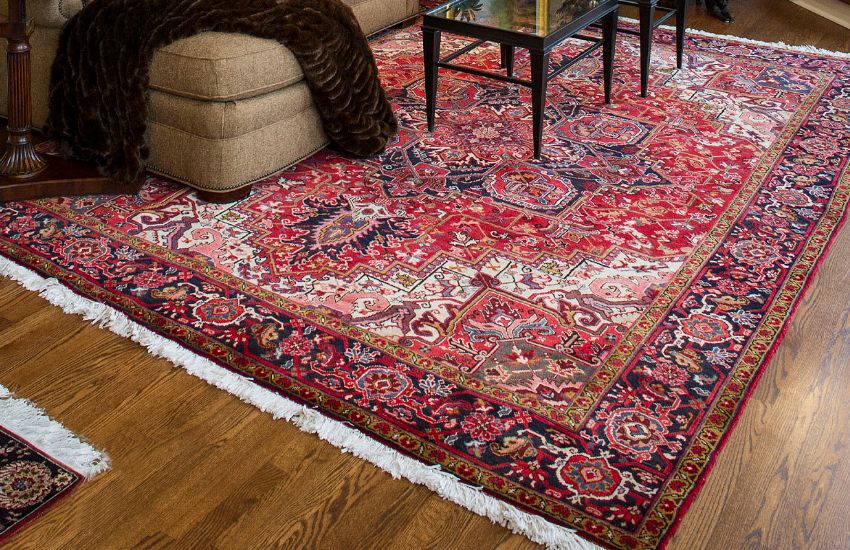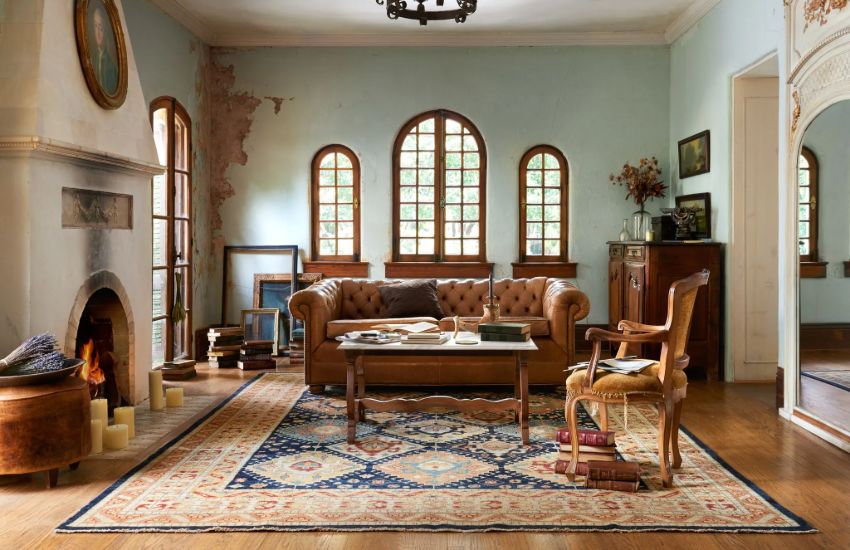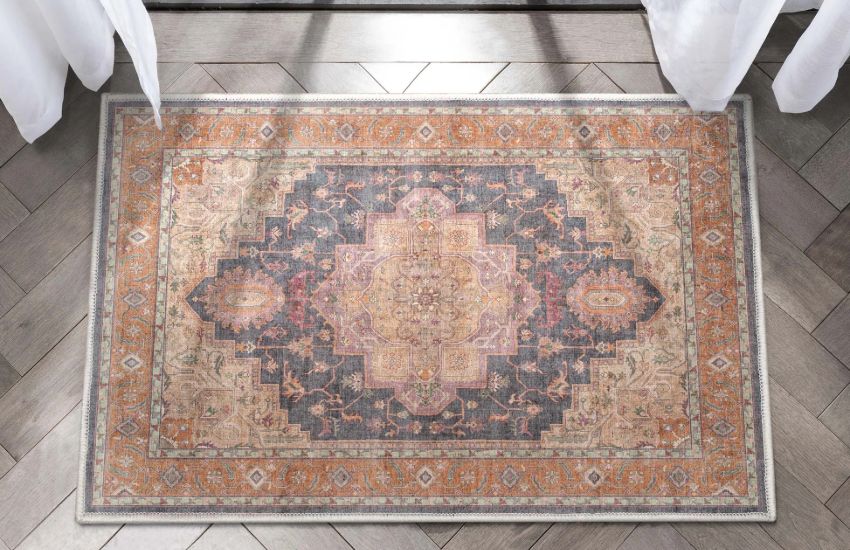Are Persian and Oriental Rugs Same Or Different? Let’s end this confusion.
Both Oriental and Persian rugs are hand-knotted rugs used to enhance the visual appeal of homes or commercial areas. Although both floor coverings are handmade, they differ in their origin, style, and design. In this article, we will discuss the difference between these rugs and elaborate on their qualities, step by step.
Are Persian and Oriental Rugs Same Or Different?
Before diving into their properties and functions, let’s see what Persian and Oriental rugs are:
Persian Rugs

Persian rugs originally came from Iran (former Persia), famous for their detailed design and Sennah knots. These carpets in Dubai are made with high-quality materials and represent the traditional values and culture of Persia. These rugs are altered in intricate designs, beautiful textures, and eye-catching colors. Persian rugs are made by the local people of Iran, and the weaving techniques are passed down from generation to generation. Many kinds of rugs are named after the city, region, and tribe of Persia and show their cultural heritage. They come in a range of designs like Mashad, Baluch, Kashan, Nain, Kerman, and many more.
Oriental Rugs

Oriental rugs are manufactured in various Asian countries like Pakistan, China, Turkey, Russia, and Tibet. Each country represents its traditions and highlights its unique craftsmanship. These hand-woven carpets come in beautiful geometrical designs and elevate the overall look of residential and commercial settings. Oriental rugs are popular for their Ghirodes knot (symmetric knot) and beat the designs of machine-made rugs. They come in regional styles such as Anatolian, Caucasian, Chinese, Tibetan, and many more.
Persian Vs. Oriental Rugs

Below are the prominent features of both rug options and how they are different from each other:
Novelty

Persian rugs are more unique and novel than the other as they are made only in Iran and have their cultural authenticity. They are used for symbolic motifs and are a popular product among local and international people. While oriental rugs are crafted in different countries of Asia, and are likely to be copied or mass-produced.
Materials
Oriental rugs are usually crafted with high-quality fiber materials like sheep wool, camel hair, cotton, and 100% natural silk. Persian rugs, on the other hand, also use cotton, silk, and high-quality wool. In tribal rugs, they also include mohair, cow hair, and yak hair to make their rugs durable and long-lasting.
Designs And Patterns

Persian and oriental rugs differ in their intricate patterns and designs and have their individual textures. Persian rugs come in more intricate and complex designs, like floral and medallion. On the other hand, oriental rugs offer a wide range of distinctive styles such as abstract, geometric, and landscape designs.
Colors
Persian rugs have richer and natural colour tones like red, blue, and gold. Persian people achieve these beautiful colors using traditional vegetable dyes. They carry earth tones that create a serene environment for the users. In contrast, oriental rugs come in an extensive collection of vibrant colors, including all neutral and warmer colors. They complement both traditional and modern interiors and enhance their visual appeal.
Prices
Both floor covering options come in different pricing ranges depending on their quality and country of origin. Persian rugs are a bit expensive as they are made with premium quality materials. They demand higher rates as compared to the oriental rugs due to their uniqueness, history, and craftsmanship. While the prices of oriental rugs vary from region to region, and the materials being used. Unlike the Persian rugs, these rugs are affordable as they come in multiple options and can be selected according to the budget limit.
Knotting Style
Persian and oriental rugs are both woven by hand, but their knotting styles make them different from each other. Oriental rugs are crafted with smaller knots and denser piles. They offer a uniform look for your rugs as they are made with symmetrical or Ghirodes knots. Their knotting style helps the rug to cope with high foot traffic and offers durable solutions for floor covering. Persian carpets are known for their higher knot counts and the use of the Sennah knot. These Persian knots provide depth to the rugs and give dynamic visual appeal to them.
Conclusion
Persian and oriental carpets do share similarities, such as both being knotted products and being made with natural materials. But they have different designs, patterns, and knot styles. The first one belongs to Iran and reveals its cultural and tribal traditions. While the second one carries versatility as it is made in multiple countries in Asia. Selecting a suitable rug for residential and commercial buildings is totally up to the choice of the customers. They should choose the one that suits their budget and the needs of their living spaces.











